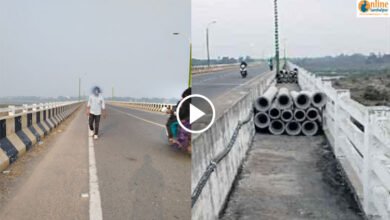Sambalpur: Pollution Situation Critical in Sambalpur; Alarming Levels Similar to Delhi, Experts Warn of Health Risks

AQI Crosses 100, Reaching Dangerous Levels
Sambalpur: Recently, Delhi’s severe pollution has become a global topic of concern. Meanwhile, the air in Sambalpur has been covered in a thick haze for the past few days. The Air Quality Index (AQI), which indicates pollution levels, consistently crossed 100 in the city. Yesterday, the AQI reached a hazardous 211, and today it hit a peak of 184, according to government data.
Despite these alarming levels, Sambalpur residents have not yet voiced concerns about the deteriorating air quality.
Morning Hours See the Worst Pollution
The AQI in Sambalpur fluctuated significantly throughout the day. This morning, at 8 AM, it stood at 142. By 9 AM, it escalated to 175, and by 10 AM, it peaked at 182. Later in the day, the AQI dropped to 100 by noon, rose to 122 by 2 PM, and gradually reached 132 by 7 PM.
The pollution is caused by high levels of particulate matter (PM10), which reached 110 micrograms per cubic meter. Experts have warned that this is extremely dangerous, particularly for those with respiratory conditions.
Online Sambalpur Is Now On WhatsApp!
Join us for the latest news updates delivered directly to your WhatsApp.
Subscribe Us On YouTube!
Join us for the latest news updates and video content delivered directly to you.
Causes of Pollution in Sambalpur
Experts believe that an increase in particulate matter in the air is causing health risks for humans and animals alike. These tiny particles can accumulate in the lungs and respiratory tract, leading to severe health complications. Furthermore, increased pollution disrupts oxygen production and affects the entire ecosystem.
One of the main reasons for the pollution is the lack of rainfall. Without rain, dust particles remain suspended in the air. Additionally, during winter, the absence of sufficient moisture in the atmosphere causes dust to stay airborne, further worsening air quality.
Solutions to Combat Pollution
Experts recommend several immediate measures to address the pollution:
- Artificial rainfall to settle dust particles.
- Spraying water on roads and construction sites to reduce airborne dust.
The current atmospheric moisture in Sambalpur is only 52%. As temperatures drop in the coming days, this percentage is expected to decrease further, potentially worsening pollution levels.
Urgent Action Required
Considering the severe air pollution levels, authorities and residents must work together to adopt corrective measures to improve air quality and prevent further health risks.






